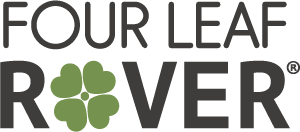7 Tips For Potty Training Your Puppy

Bad news: a mess in the house is a reality with a new puppy.
Good news: potty training a puppy is really straightforward. After all, what goes in must come out. And it’s good for things to come out because that means everything is working just right!
But the hope is to teach your puppy that eliminating outside is far more desirable than inside your home. It makes life just that much easier and cleaner for everyone.
So, to help, I’ve gathered up some tips to help you house train your puppy. But first, a bit of background on your puppy's early weeks.
From The Very Beginning
Every puppy is an individual, but also a reflection of the environment where she began her new life. In the whelping environment, the dam is the first influence in natural cleanliness. She will ...
- Lick her puppies’ genitals to stimulate elimination
- Eat what her puppies eliminate
- Keep the whelping area super clean.
If the mother doesn’t do this, and some don’t, it’s up to the breeder to do it. Either way, it’s a boatload of work for the dam or breeder to keep up with cleaning a litter of puppies, all day and all night.
Soon the puppies will start to move around and pee and poop on their own. It’s a sight to behold when they totter as far away from their sleeping area as they can just to poop. Most walking puppies, if given the chance, won’t eliminate where they sleep.
As puppies mature, and the whelping area turns into a romper room, the breeder’s choices count for a whole lot.
I think that puppies raised in barns or outdoor kennels are the easiest to house train. They literally have been going outside since they started to move around. They learned it from the environment in which they were raised.
Puppies raised in a home tend to take longer to potty train. That's because they’ve been going in the house since the very get-go. That’s all they know.
Is one breeding environment better than the other? No, I don’t think so. It’s simply what the breeder has chosen for raising her puppies. Sometimes it has to do with space, time of year (weather) and the breed of dog. Eventually, no matter where your puppy began her life, if you’re a good teacher, it all evens out!
Simple Tips For Potty Training Your Puppy
Now you have a better idea of what your puppy has been used to up to this point. Now it's time to start training.
1. Bringing Your New Puppy Home
You've bought your puppy a bed and toys. You’ve planned out the best puppy diet and bought nice bowls. You’ve put a crate in the bedroom. You've bought a matching harness and leash ... and your custom tags just arrived. YAY!
This is all great stuff, part of the yummy puppy package. But don’t forget about the simple fact that your puppy is a living being. She will have normal biological functions.
Your whole family needs to consider and discuss this before bringing your new little puppy home. Otherwise, after three weeks of very little sleep, you’ll wish you’d been a bit more prepared on this end. Preparation is the key to success.
So this next rule is the most important one!
2. The 20 Minute Rule
Here it is, as simple as simple gets. If your puppy ate, drank or is walking around in your home, take her outside every 20 minutes.
If your puppy is playing, running around, chewing on a bone, take her outside every 20 minutes.
Any time your puppy is active ... every 20 minutes go outside.
When does this rule not apply? If your puppy is sleeping.
If you live in a warm climate, this is super easy. If you live in a colder climate, leave your potty clothes by the door so you’re ready when you need to take your puppy out. And if you forget, no worries. You’ll just be one of the many puppy owners who has stood in the snow barefoot, watching and waiting for their puppy to go.
As your puppy ages, if you’ve been super consistent and vigilant, you won't have to take her out as often.
3. Potty Training A Puppy: Day Vs Night
During the day, follow the 20 minute rule unless your pup is sleeping.
When it’s bedtime, I recommend a crate or gated area for your puppy. This is especially important if nature calls in the middle of the night. If the breeder did her job, your puppy should whine. She'll want to leave her sleeping area to go. This is super cool actually ... and you should be grateful. As her bladder and bowels mature, she'll have to get up less and less during the night. And that means sweet dreams for you!
4. Training At The Door
How do you know when your growing puppy has to go outside? I usually have bells on a leather strap from the doorknob to the floor. Every time the door opens, the bells jingle. This helps teach your dog that the bells must jingle before she goes out.
Over time (and time is relative to each puppy) ... your puppy will experiment with touching the bells to make a sound. That’s when you know she’s starting to make a connection between the bells and going outside. Until then, your responsibility is to put yourself on a schedule, every 20 minutes. This creates consistency and reinforces your training.
5. Where To “Go”
It’s best to let your puppy tell you where in the yard is the best place for her to "go." Puppies are fairly particular about their spot. Some like to be near their owner ... others like a bit more privacy. Some need a certain scent to make them feel comfortable. Some need to do an initial speed lap around the yard. And of course some then need to do a celebratory speed lap after they’ve peed or pooped.
I’m not a fan of using potty pads inside the house. I find it takes a good long while to truly transition a puppy to go outside. But I also understand that it can be almost impossible to make it outdoors from the top of the building in time. So, if you need to use a potty pad, I’d place it near the front door. You can use a semi-gated area, or a litter box-type set up. It'll make it easier to transition.
PRO TIP: Caution with potty pads: don't use one in every room. Just use one, and keep it in a specifically marked area. I know more pads might seem more convenient. But teaching your puppy to use a potty pad in different rooms is a super bad idea. Potty training a puppy goes out the window in the long run if you use multiple pads.
6. Outside Space
If your puppy goes outside to eliminate, go with her. This is for safety, but also to verify that your puppy did indeed go. Keep in mind that puppies have the attention span of a gnat. A leaf blowing by can make your new gal forget why she went outside in the first place.
And, each puppy will have a different potty style. This is something you should learn about your puppy. What’s her style? Does she empty her bladder and bowels in one shot, or does she take 3 or 4 jaunts around the yard? You need to know this.
If your outside space is fenced in, you can choose if you want to use a leash or not. If your outside space isn’t fenced, always use a leash for safety.
7. Marking The Big Event
Initially, when your puppy is eliminating, but not before, use your cue word or phrase ... whatever it is. You can say whatever you want: park it, go potty, do your business. It really doesn’t matter what phrase you use, just make sure it's something you’re comfortable saying in public.
When your puppy has finished, that’s when you give praise. You can even go for a walk around the yard together before going back inside. I use rewards for training, but I don’t recommend using a food reward for potty training. I’ve met way too many super-keen puppies that catch on really quick. They figure out eliminating = treats and start to try it out wherever their owner is. Inside or out. So, just use lots of good praise, acknowledging a job well done!
Over time, you’ll be able to say your word or phrase, jingle the bells and go outside and have your puppy pee or poop on cue. But that’s over time, so don’t get overzealous in the beginning. It’s a gradual process ... a marriage of sorts between your consistency and your puppy’s maturity.
How long will it take? To set yourself up for success, consider this a new forever. Oh, wait a minute, what? No time limit?
But if you set a time limit for your puppy, you’re setting yourself up for frustration and disappointment.
If you accept your puppy’s schedule as your new normal, it will all go much more smoothly. It will progress naturally, without unnecessary pressure.
How To Deal With Accidents?
So, you’re doing everything correctly. You're going outside, following the 20 minute rule, crating your puppy at night. But she's still having accidents. What then? This can ... and likely will happen. And probably more than once.
With accidents, first and foremost, double check that your management is good management. Make sure you’re doing your part. If you’re the weak link, and that’s why there are accidents, then correct that first.
Make sure you don’t get upset when your puppy has an accident. Always remember, what goes in must come out and this is a good thing. Clean it up, be grateful for a healthy puppy. And set your timer for 20 minutes!
Sometimes though, accidents can be caused by something else. If everything with your training seems to be going well, it could be a medical issue like parasites. It may also be the wrong food. Or it could simply be a puppy who isn’t maturing on schedule. Some need a bit more time both emotionally and physiologically, and that's ok. A watchful eye can help you narrow down what might be going on.
In the end, enjoy. Truly, enjoy this time with your puppy. Potty training a puppy is an important part of the puppy phase, and it all goes by so quickly ... like a blink of the eye. Good luck!
Written By Nancy Tanner
Nancy Tanner CPDT-KSA is a certified dog trainer and award-winning blog writer and photographer. She’s the founding owner at Paws & People, The Scent Project and The World Treiball League and has appeared on The Martha Stewart Show. She and her family live in Bozeman, Montana on their urban farm that is a blend of everything they do and love: working with dogs, biodynamic gardening, nutrition, and farming. Nancy has specialized in puppy training and adolescent development for more than 16 years now. Visit her award-winning blog at nancytanner.com




